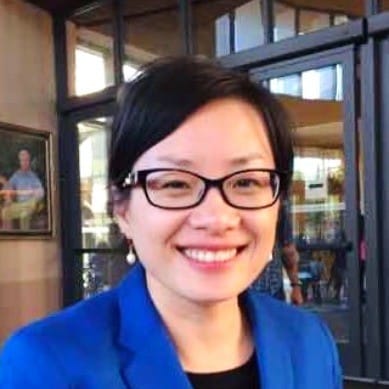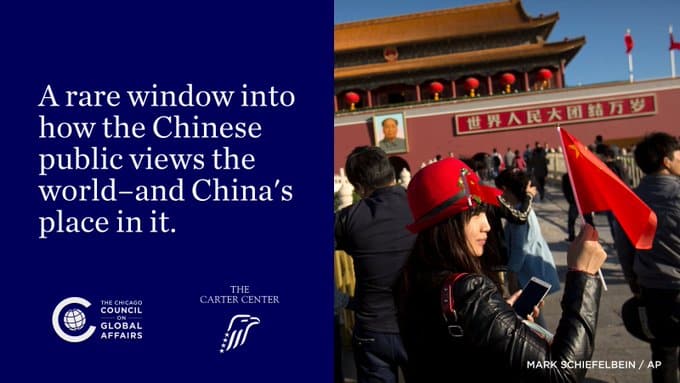U.S.-China Educational Exchange under a Second Trump Administration
- Analysis
 Juan Zhang
Juan Zhang- 11/25/2024
- 0

China is no longer the top source of international students in the United States. India has surpassed China for the first time since 2009, claiming the top spot as the primary source of international students.
During the 2023-2024 academic year, the number of Indian students studying in the United States surged by 23% to 331,602, while Chinese international student enrollment dropped by 4.2% to 277,398.
This data comes from a report, titled Open Doors International Student Data, released by the Institute of International Education in collaboration with the U.S. State Department.
In many ways, this is not a surprise. The number of Chinese international students studying in the United States has been trending downward for several years. At its peak during the 2018–2019 academic year, the number of Chinese students studying in the United States reached 370,000. The number has dropped annually since the pandemic.
The travel restrictions that were put into place during the pandemic were certainly a contributing factor. However, and perhaps most important, geopolitical tensions between the United States and China and related anti-Asian hate incidents that happened during the pandemic cast a shadow of doubt for Chinese students considering studying at American universities.
Mallie Prytherch, a researcher at the University of Hong Kong’s Centre on Contemporary China and the World, told CNN, based on interviews that she did with students in Beijing, that the “onslaught” of racism and anti-Asian hate crimes during Donald Trump’s first presidency shattered the students’ “American Dream.”
A Second Trump Administration and its Impact on Educational Exchange
In light of the second Trump administration taking office in January, will the administration take a harder line policy on further restricting education exchange between the two countries? Will the number of Chinese students studying in the United States slump further? Are there any concrete steps that can protect already fragile educational exchanges?
Kyle Jaros, associate professor of global affairs in the Keough School of Global Affairs at the University of Notre Dame, wrote in his comments for the US-China Perception Monitor, “Academic exchange and cooperation between the United States and China, already far more restricted than a decade ago, is likely to diminish further under a second Trump presidency.”
Kyle suggests that a second Trump administration could intensify policies unfavorable to Chinese students and researchers. Potential measures include increased visa denials, border interrogations for Chinese students and researchers, restrictions on U.S. university partnerships with Chinese entities, and a revival or expansion of China Initiative-style law enforcement efforts.
“During his [Trump’s] previous presidency, according to new research in 2022, his policies led to a 12% decline in Chinese student arrivals relative to other leading countries, largely due to increased visa restrictions, longer processing times, and heightened security checks,” wrote Lei Guang, the So Family Executive Director of the 21st Century China Center at UC San Diego’s School of Global Policy and Strategy.
“The age of flourishing partnerships between Chinese and American universities is over for now. Bilateral tensions and revised U.S. government restrictions have led some American universities to rethink their existing collaborations with China, and make new ones unlikely,” wrote Madelyn Ross, president emeritus at US-China Education Trust, a non-profit organization based in Washington DC, with a mission to promote bilateral relations through a series of education and exchange programs.
Amid heightened bilateral relations, several American universities have taken steps to terminate their partnership with Chinese counterparts. In February this year, Florida International University announced its decision to end its partnership in China to conform to a state law regulating colleges’ relationship with “countries of concern”. In September, Georgia Tech said it was ending its research and educational partnership with Tianjin University, a university that was alleged to have links with the Chinese military.
A House report this year argued that Chinese partnerships with U.S.-funded researchers and universities have helped to propel Beijing’s advancements in its military. The report was put out by the House Select Committee on the Chinese Communist Party and the House Committee on Education and the Workforce. It reviewed several joint university partnerships. Georgia Tech and the University of California, Berkeley were among them. In a statement to the New York Times, Berkeley said it had decided to terminate its ownership in a Chinese institute.
Nevertheless, experts still see a slim bright light in the field of educational exchange under a second Trump administration.
Guang highlighted that U.S.-China educational exchanges under a second Trump administration could vary depending on internal policy debates. “China hawks” may advocate stricter student visa controls, citing security risks, while realists might support selective engagement, valuing educational ties and competition for Chinese talent. The direction of these exchanges will likely be decided by which faction’s influence prevails.
“The ultimate direction will likely hinge on which group dominates Trump’s policy agenda on international education,” wrote Guang.
Ross also indicated that it was difficult to predict Trump’s policy due to its bifurcated approach to China. “But much damage has already been done and the outlook for educational exchanges is mixed. There is room for stability and possible improvement in some areas over the next four years,” wrote Ross.
One More Collapsing Pillar?
Educational exchange has long been a pillar in US-China relations. In her interview with the Monitor in 2019, Ambassador Julia Chang Bloch, founding chair of the US-China Education Trust, pointed out that people-to-people educational and cultural exchange is the last pillar alongside political and military, economic and trade in bilateral relations.
“Traditionally, the third or last pillar has been insulated from political and economic disputes between governments. Educational and cultural relations have been seen as a cornerstone of mutual understanding, and an important bedrock for policies dedicated to the peaceful settlement of differences,” said Bloch.
She further indicated that the last pillar is “nearing the cracking point” since U.S.-China relations started to rapidly deteriorate after Trump took office. During the first Trump administration, debates emerged on whether the United States should educate Chinese students or in which areas they should be allowed to study.
In April 2020, Senator Tom Cotton, in an interview with Fox News, said, “If Chinese students want to come here and study Shakespeare and the Federalist Papers, that’s what they need to learn from America.” He continued, “They don’t need to learn quantum computing.”
In the following month that year, Cotton, along with another Republican Senator, Marsha Blackburn, unveiled the SECURE CAMPUS Act, legislation that would prohibit Chinese nationals from receiving visas to the United States for graduate or post-graduate studies in STEM fields.
Restriction on what Chinese students can study at American universities is not a solely Republican issue. Deputy Secretary of State Kurt Campbell, a senior official from the Biden administration, told a crowd at the Council on Foreign Relations in June this year, “I would like to see more Chinese students coming to the United States to study humanities and social sciences, not particle physics.”
When commenting on this growing trend, Kyle Jaros said, “Proponents of such measures cite national security and economic competition with China as the reason for growing restrictions on researchers with ties to China, but proponents rarely seem to consider the costs to U.S. national security and economic prosperity of alienating highly dedicated researchers and driving away top scientific talent.”
A research paper supported by the National Academy of Sciences Caught in the Crossfire: Fear of Chinese-American Scientists, stated that “surveyed scientists of Chinese descent in the U.S. report anxiety and new difficulties in pursuing their research, with 61% considering leaving the U.S. and 45% avoiding federal grant applications.”
The report also indicated that China has been the most important foreign supplier of U.S.-based scientists for over two decades. In the meantime, a Pew survey conducted in 2018 said half of Americans think science, technology, engineering, or math (STEM) are difficult subjects to pursue.
“It is to the long-term benefit of both sides to have students from both countries study in the other country,” said Dennis Wilder in an interview with the Monitor. Wilder, a professor in International Relations at Georgetown University, has decades of career experience in the national security apparatus. He also raised the question of national security while promoting student exchange.
“I’m a great believer in student exchanges,” said Wilder, who believes the more Chinese and American students come together to share and understand each other’s perspectives, the more they will discover common interests while also engaging with their significant differences.
Wilder further stated, “I think there are areas that are national security concerns that Chinese students should not be allowed in, such as areas where a university is involved in defense projects that are clearly of a sensitive nature.” He also pointed out that American students are not allowed to study in PLA-related programs in China.
The Road Forward
“Education is big business,” Bloch said in 2019. She went on to explain that Chinese students in U.S. universities bring an estimated $15 billion annually in living expenses and related jobs. “If you’re part of the business world, you absolutely cannot ignore something of that scale,” she said.
The latest Open Doors report indicated that the United States hosted a record-high number of more than 1.12 million international students in the 2023-2024 academic year, making up about 6% of the total U.S. higher education population, and contributed more than $50 billion to the U.S. economy in 2023.
“The United States has the highest quality of higher education. It is still a sought-after destination for top students, including Chinese students,” said Dr. Jin Jin, the founder, and CEO of Atlanta International Education Group, a global consulting and education firm based in Atlanta, Georgia, which provides education advice and academic support for high school and university students locally and nationwide.
Asked whether concrete steps exist to stabilize and protect fragile educational exchange during a second Trump administration, Guang suggested prioritizing institutional partnerships and exploring virtual exchanges where possible.
“People-to-people diplomacy remains critical, and education organizations could work to keep these channels open by advocating for streamlined visa processes and post-graduation internship or even employment opportunities. This approach could help mitigate the effects of political tensions and preserve a foundation for more exchange in education,” Guang pointed out.
Despite the mounting difficulties in U.S.-China relations, some U.S. officials are still trying to encourage the flow of students. “I want to confirm that we very much welcome students from China to the U.S. We have the largest number of Chinese students studying outside of China here. We do know that US universities are continuing to value Chinese students,” said Marianne Craven of the State Department, according to a recent report by South China Morning Post. Challenges with scarce opportunities will simultaneously exist in the US-China education exchange in the next four years. How opponents and supporters of education exchange between two countries within the administration juggle with each other remains to be seen.
Author
-

Juan Zhang is a senior writer for the U.S.-China Perception Monitor and managing editor for 中美印象 (The Monitor’s Chinese language publication).







